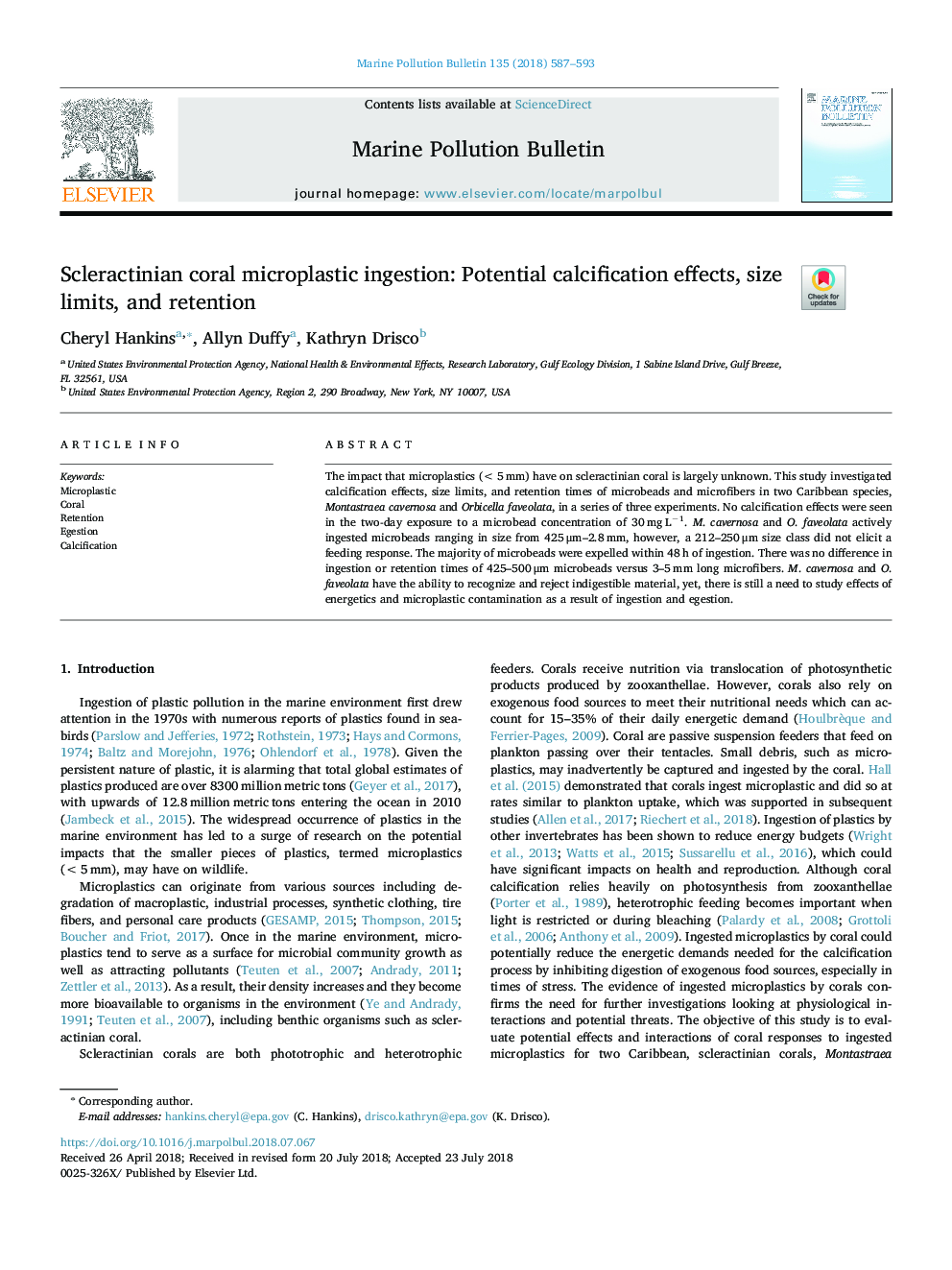| Article ID | Journal | Published Year | Pages | File Type |
|---|---|---|---|---|
| 8870737 | Marine Pollution Bulletin | 2018 | 7 Pages |
Abstract
The impact that microplastics (<5â¯mm) have on scleractinian coral is largely unknown. This study investigated calcification effects, size limits, and retention times of microbeads and microfibers in two Caribbean species, Montastraea cavernosa and Orbicella faveolata, in a series of three experiments. No calcification effects were seen in the two-day exposure to a microbead concentration of 30â¯mgâ¯Lâ1. M. cavernosa and O. faveolata actively ingested microbeads ranging in size from 425â¯Î¼m-2.8â¯mm, however, a 212-250â¯Î¼m size class did not elicit a feeding response. The majority of microbeads were expelled within 48â¯h of ingestion. There was no difference in ingestion or retention times of 425-500â¯Î¼m microbeads versus 3-5â¯mm long microfibers. M. cavernosa and O. faveolata have the ability to recognize and reject indigestible material, yet, there is still a need to study effects of energetics and microplastic contamination as a result of ingestion and egestion.
Related Topics
Physical Sciences and Engineering
Earth and Planetary Sciences
Oceanography
Authors
Cheryl Hankins, Allyn Duffy, Kathryn Drisco,
